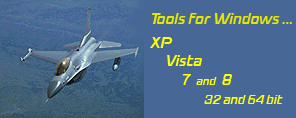
|
![]()
DDR
![]()
|
![]() Loss-free data
decorrelation
Loss-free data
decorrelation
![]() Simplifies data for
modeling leading indicators
Simplifies data for
modeling leading indicators
You can now overcome two huge problems inherent in financial data when creating leading indicators. DDR will decorrelate your data and reduce the number of explanatory variables needed to make your leading indicators work. Perfect for neural networks, genetic algorithms, classification trees, vector quatization and other data mining or modeling paradigms. |
| What Is DDR ? |
When forecasters have no idea which financial indicators to feed their forecast model or computerized trading system, they usually begin by feeding it lots of data, data that might have any relation to the desired result. However, Chande and Kroll in "The New Technical Trader" (page 9) have shown that common indicators like momentum, RSI, stochastics, ADX, etc. have correlations with each other ranging from 0.77 to 0.93 (r-squared values). Consequently, these forecast models are being fed an empty diet of numbers mostly saying the same thing. It is imperative the model/system be fed the smallest, reasonable number of technical indicators. To see why, click here. DDR helps you reduce the number of inputs to your model/system by addressing both multi-colinearity and high dimensionality. This approach is better than the method of "pairwise elimination" used by some other products. To see why, click here. |
| How Is DDR Used? |
Suppose your model's data is arranged on a spreadsheet so that each indicator fills a separate column and each forecast corresponds to a separate row. DDR will take your data array and produce a new array the same size as the old one but with two important differences. All the columns in DDR's output array are completely new indicators with the added special property of being 100% uncorrelated with each other! This will very likely enhance your model's performance.
The figure illustrates a sample array of forecast data produced by DDR. DDR concentrates all the information of your original indicators into the smallest number of leftmost columns in this new array. Suppose DDR specifies that the first six columns (circled) contain over 96% of all the available information. The remaining 14 columns contain only 4% of the available information and most practitioners simply ignore them. If you want no data loss, simply use all columns produed by DDR. You can elect to use all or any number. The choice is yours. In any case, all columns are mutually decorrelated. By using only the first 6 columns in this example, DDR has reduced 20 columns of your original, correlated data down to only 6 columns of 100% decorrelated data. How's that for data reduction! |

|
| Demonstrations |

|
To demonstrate the power of DDR, we prepared three different models to forecast future values of a simulated financial time series. This time series was a composite of three kinds of market forces: periodic cycles (sinusoidal curves), aperiodic chaos (the Mackey-Glass chaotic time series), and random motion (Brownian noise). A small portion of this time series is illustrated here. The time series was placed in a spreadsheet along with 20 other technical indicators that were applied to it. The indicators included past values of the time series as well as moving average values and other typical functions. There were 1500 cases (rows of data) and each row included a target forecast of the simulated time series 10 rows into the future. |
Three models were developed on this data.
The results were astounding. (See table below.) Standard regression on all 21 variables gave an average forecast error of 15%. The neural net in the second model processed all 21 variables and delivered only 6.4% error. However, the neural net in the third model only needed the first 5 columns of DDR's output to also produce 6.4% error. All the other 16 columns could be safely discarded with no additional loss of performance!

In summary, DDR tries to simplify your data set so your forecasting models and indicators are easier to build and test, as well as improve future reliability.
| Available Platforms |
REQUIRES also having DDR for Microsoft Excel.
The user first exports time series data from TradeStation to a Microsoft Excel spreadsheet. The series can be market price, or from various technical indicators (e.g. RSX). He then applies WAV in Microsoft Excel to each time series column, creating corresponding new columns with a chosen degree time series compression. At this point, we recommend collecting all the output columns from WAV, as well as other time series data, into an array and decorelate the array with DDR. The selected output columns from DDR can be used directly as new time series technical indicators, or be fed into a modeling tool (e.g. neural net or genetic algorithm) for forecasting purposes.
With a spreadsheet, the user can see all the columns of data being produced, making it easy to inspect and select which columns to feed each successive process (technical analysis -> WAV -> DDR -> forecast module). Only after this has been accomplished do we recommend reconstructing the temporal compression of WAV and spatial decorrelation of DDR in TradeStation, bypassing the spreadsheet altogether. The result can be applied to real-time and end-of-day data.
Microsoft EXCEL (97, 2000-2003, XP)
DLL (for software programmers)
| Additional Information |
The DDR software package includes ...
 |
For more details on DDR, download our illustrated PRODUCT GUIDE. Download our TECHNICAL REPORTS.
Read our
CUSTOMER's LETTERS.
Read our
FREQUENTLY ASKED QUESTIONS.
|
DDR
performs decorrelation. It is not a trading system. |
|